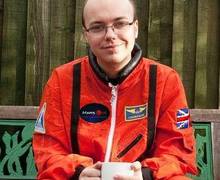Humans will go to Mars one day. But what if we skipped the plant-a-flag stage, and instead built a permanent human settlement on Mars in 2025?
What challenges will need to be overcome to make this a reality, and how can they be dealt with? What technologies will be needed for a small community to survive (and ultimately thrive) on the red planet? How might the early Martian pioneers engineer unique solutions as they construct the first society on another world? Though it may sound like science fiction, the scale of the challenge ahead is such that an Open Source strategy could prove vital to its success.
In a first for human spaceflight, the Mars One project intends to send 4 people on a one-way mission of permanent settlement to Mars in 2025. This will be preceded by a series of unmanned precursor missions, the first one of which is planned for a 2018 departure. What makes Mars One unique is that it is entirely privately funded, international, and apolitical, which enabled it to launch a global astronaut selection process in 2013 - to which over 200,000 people from over 140 countries applied.
After a series of cuts, there are now just 660 people remaining in Mars One's selection process. Over the course of 2015, 24 will be chosen to enter full time astronaut training for the mission.
In this talk, one of those remaining 660 Astronaut Candidates will explore the architecture of Mars One's mission. A special focus will be on how a one-way trip using just existing technology is not only possible, but is substantially simpler and cheaper than previously proposed return missions.
